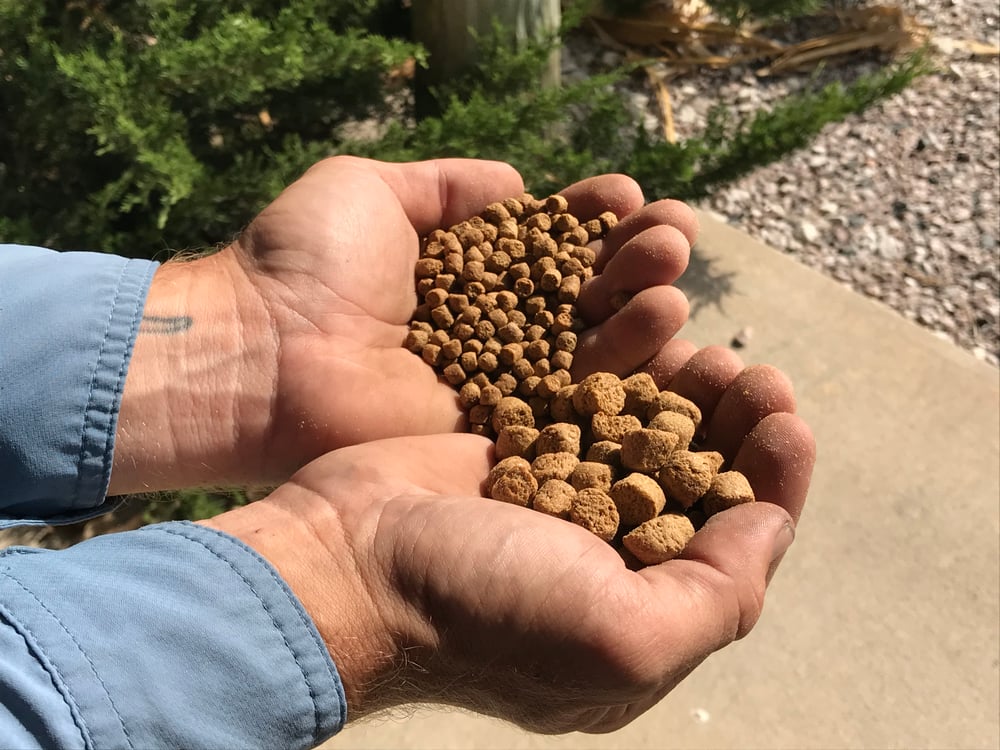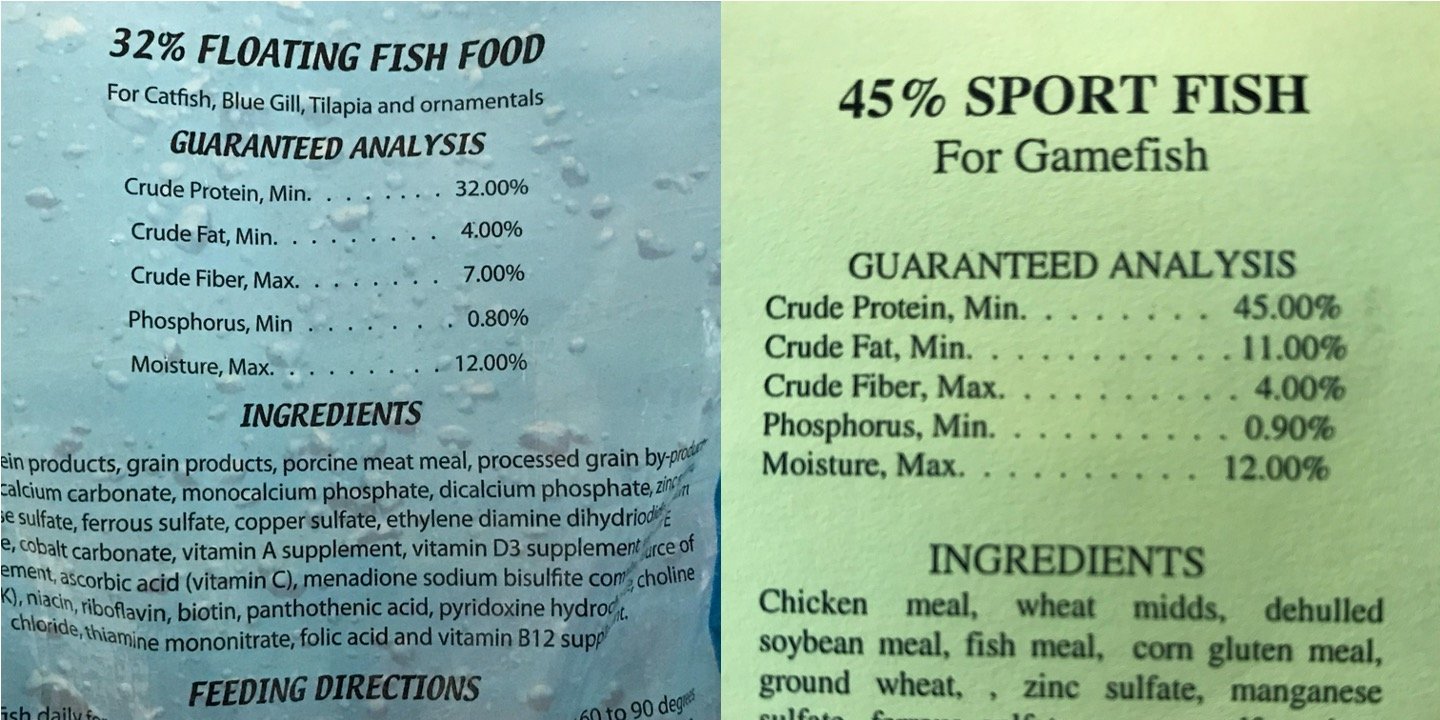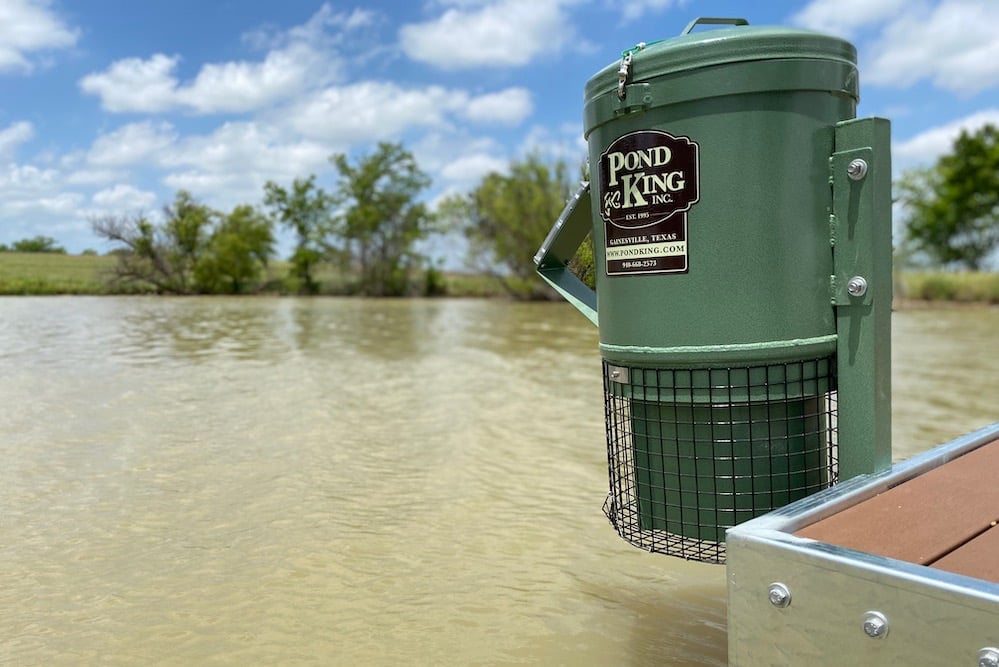You've decided to add supplemental feeding to your pond management plan so you can achieve your desired goals, but how do you decide which feed to use?
At Pond King, our fisheries biologists understand the best feeding habits and needs to grow a robust, diverse private pond. Our team has compiled several factors you should consider when selecting your fish feed.
Fish Food Facts
When choosing supplemental feed for your fish, there are many options on the market today. Each of these options has been designed to fit a specific niche and accomplish a particular goal. Within these options, there are only a couple of factors that change between the different options on the market.
The two most important things you will have to consider are protein concentration and pellet size. These are most often going to be the two factors that determine what feed is best for your needs.
Why Add Supplemental Fish Feed for Your Pond
Let's start by first going over just why you might want an automatic fish feeder on your pond.
Boost Forage Species Population
You would most commonly add supplemental feeding to your pond management plans to boost bluegill broodstock populations. By feeding bluegill, you increase their growth rates, decreasing the amount of time it takes to reach a size in which they are no longer able to be consumed by the majority of predators in the pond. By boosting broodstock populations, you are increasing the bluegill population's reproductive capacity, ensuring the sustainability of bluegill as the primary forage for your game fish populations.
Feeding Sport Fish for Larger Growth
Alternatively, you may want a feeder to provide a food source for fish such as Hybrid Striped Bass and catfish to improve their growth rates and grow larger fish. Now let's take a look at the options you will have to consider when trying to accomplish one of the above goals.
Select the Right Fish Food Pellet Size

The Difference in Choosing Fish Pellets from Pond King
Here at Pond King, we use two sizes of feed in our ponds. A large pellet (approx ¾ in.) and a small pellet (approx ¼ in.) will cover anything for a pond situation. The pellet size we use most often is small because the pellets are suitable for bluegill, catfish, tilapia, and young hybrid striped bass. The small pellets will typically be ideal for just about every fish in your pond.
When to Use Larger Food Pellets
Usually, we only use the large pellet feed for adult feed-trained Largemouth Bass and adult Hybrid Striped Bass. The large pellet is too big for smaller baitfish to consume, so we only use it in particular situations.
What is Optimal Fish Food Protein Concentration?
 The more important consideration when selecting the proper feed is its protein concentration. The two options we use most often are 32% and a 45% protein concentration.
The more important consideration when selecting the proper feed is its protein concentration. The two options we use most often are 32% and a 45% protein concentration.
Which Pelleted Feed is Right for Your Pond?
The 32% concentration is our most widely used feed. We select this feed for catfish, tilapia, and most often supplemental feeding regiments of bluegill. Like the large pellet feed, the 45% protein concentration feed is more specialized in its uses. We typically only use this feed for game fish such as pellet-trained Largemouth Bass and Hybrid Striped Bass.
A quick guide to making it easy to select the proper feed is as follows:
- Supplemental feeding of bluegill or tilapia populations, use 32% protein/small pellet
- Feeding pellet-trained Largemouth Bass or Hybrid Striped Bass, use 45% protein/small pellet (for younger/juvenile fish) or large pellet (for larger/adult fish)
- Feeding catfish, use 32% protein/small pellet
Contact Pond King for Fish Feed and Pond Management
Hopefully, this guide helps in selecting the correct feed for your private pond. If you have any questions about specific situations or types of feed, Pond King, Inc., has experienced fisheries biologists that can help you select the right fish feed for your pond. Contact our biologist at ethan@pondking.com, and we will help you select the proper feed.
Check out our YouTube video on proper fish feeding!
See y’all down at the pond.




